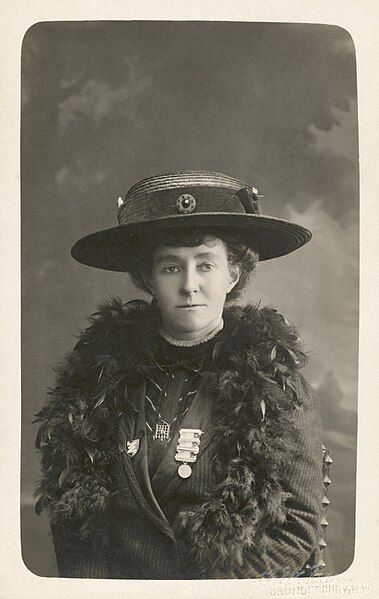Emmeline Pankhurst was a British political activist who organised the British suffragette movement and helped women to win in 1918 the right to vote in Great Britain and Ireland. In 1999, Time named her as one of the 100 Most Important People of the 20th Century, stating that "she shaped an idea of objects for our time" and "shook society into a new pattern from which there could be no going back". She was widely criticised for her militant tactics, and historians disagree about their effectiveness, but her work is recognised as a crucial element in achieving women's suffrage in the United Kingdom.
Pankhurst, c. 1913
Lydia Becker was an early influence on Pankhurst and may have been enamoured of Pankhurst's father
Richard Pankhurst first caught Goulden's eye when she spied his "beautiful hand" opening the door of a taxi as he arrived at a public meeting in 1878
St Luke's Church, Pendleton
A suffragette was a member of an activist women's organisation in the early 20th century who, under the banner "Votes for Women", fought for the right to vote in public elections in the United Kingdom. The term refers in particular to members of the British Women's Social and Political Union (WSPU), a women-only movement founded in 1903 by Emmeline Pankhurst, which engaged in direct action and civil disobedience. In 1906, a reporter writing in the Daily Mail coined the term suffragette for the WSPU, derived from suffragistα, in order to belittle the women advocating women's suffrage. The militants embraced the new name, even adopting it for use as the title of the newspaper published by the WSPU.
Annie Kenney and Christabel Pankhurst of the WSPU, c. 1908
Emmeline Pankhurst founded the WSPU in 1903 and became the most prominent of Britain's suffragettes.
Mannequin of Lilian Metge
Emily Davison became known in the WSPU for her daring militant action.








